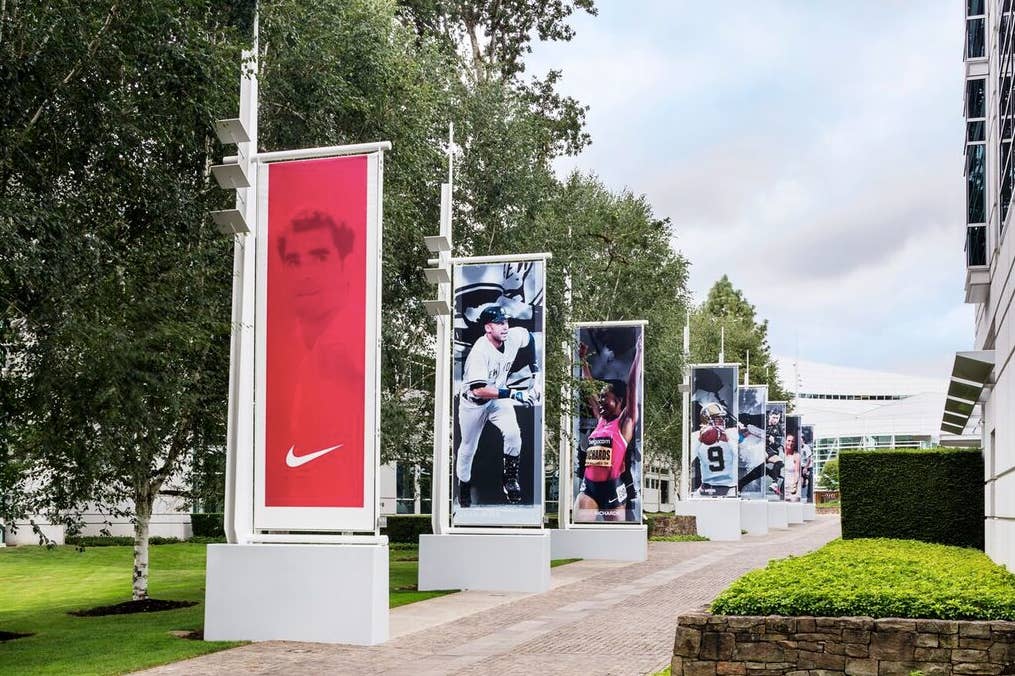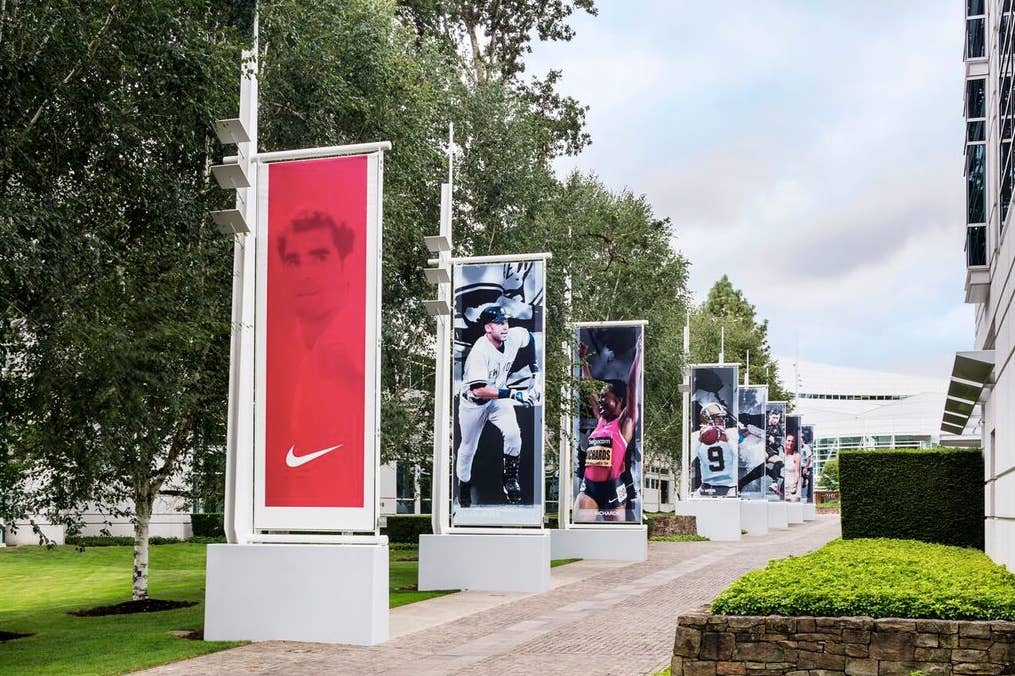
The mystique of Nike lies behind a berm near Beaverton, Oregon. It is there, where the Nike Worldwide Headquarters spreads across 286 acres and more than 75 buildings, that Jordan lovers can visit the lobby of the Jordan Building to peruse a collection of drool-worthy sneakers. Or maybe you want to check out that replica Pebble Beach #18 tee box and subsequent green a mere 315 yards away. Or tie back to a bit of Nike’s New England history and stop in the Boston Deli inside the Joan Benoit Samuelson Building, a deli-meets-sports bar with a treasure trove of signed athlete photos and memorabilia, much of it dedicated to Nike co-founder Phil Knight.
And that’s just a start.
In my many years covering Nike, writing for publications such as Sports Illustrated and Popular Mechanics, I’ve had the pleasure of multiple invites onto the campus to interview athletes and designers and witness the creation process live in search of a better story. Whether with a group of other journalists in a coach weaving through the security-guarded entrance of the Tiger Woods Conference Center (my first official visit to campus), pulling up to the main entrance (past the 48 flags signifying the countries Nike did business with when it was founded), or even meeting a Nike employee on campus after meandering through a wooded walking path south of it that connects the local light rail line—and hundreds of employees using the stop—to the main campus, arriving at the site always offers an entry into what feels like a rarefied world.
Once there, I’ve tossed a football, kicked a soccer ball and fielded a lacrosse ball on Ronaldo Field, explored the Nike Museum in “Pre Hall,” chatted with Tobie Hatfield while overlooking the six-acre, seven-foot-deep manmade Lake Nike—the earth removed from the lake creates the berm that surrounds much of the campus, offering a physical and metaphorical barrier to the surrounding area—and toured the site multiple times, even jumping from interview to interview across campus and wishing I had a golf cart to quicken my pace.
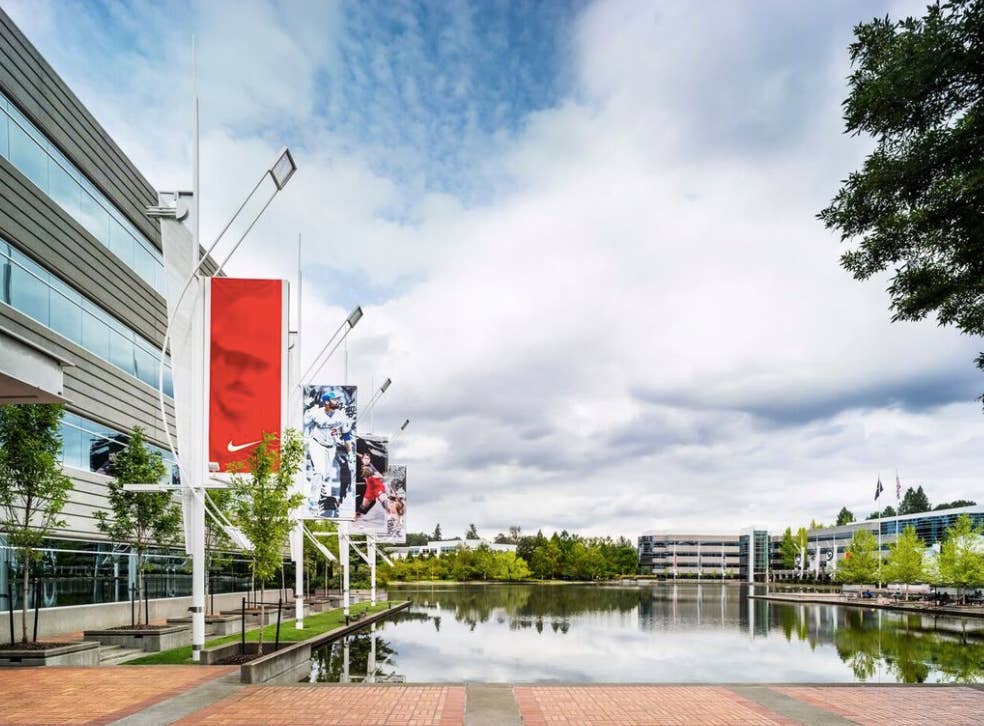
As you explore the campus, it comes to you in layers. First-time visitors are wowed by the sheer volume of buildings named after sports stars, the banners, the pedestrian activity, and even the 281 bronze castings of famous athletes and key figures in Nike history that line walkways.
Any initial visit requires you to duck into Prefontaine Hall to view the mainstay relics of the company. Perched on a mini-peninsula into the lake, the mini Nike museum includes the Volkswagen van used to sell Nike sneakers from decades ago, the once-lost, now-found waffle iron that co-founder Bill Bowerman used to create the outsole of the first Nike Waffle Trainer, and all the little knick-knacks that make a museum.
But venturing beyond Pre Hall, the polished story of Nike, and the shores of Lake Nike allows you to make the campus experience your own, akin to exploring a university campus beyond the traditional tour or, perhaps more appropriately, how you’d explore the archives of your favorite Nike sneaker.
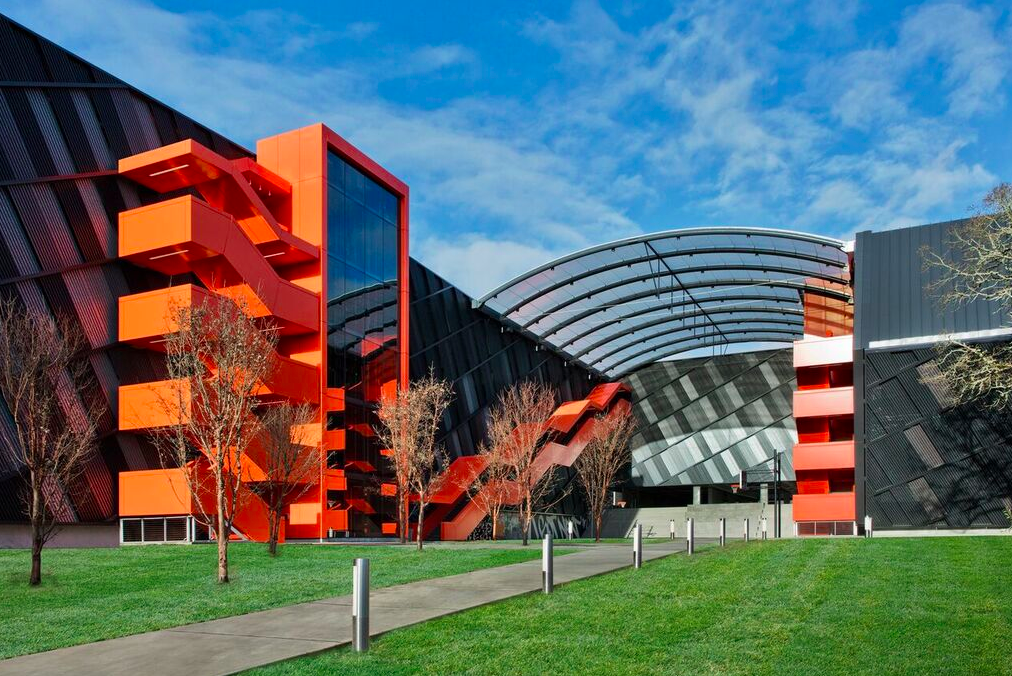
The campus started in the 1980s, with 69.5 acres, but quickly grew after opening in October 1990, at 1 Bowerman Drive, with eight buildings. Knight’s plan from the beginning was to name buildings for sports figures key in Nike’s growth, starting with Joan Benoit Samuelson, Dan Fouts, Bo Jackson, Michael Jordan, John McEnroe, Alberto Salazar, Mike Schmidt, and Steve Prefontaine.
Over the years, the additions—Nolan Ryan, Ken Griffey Jr., Jerry Rice, Pete Sampras, and possibly one of the most famous buildings on campus, the Mia Hamm Building, home to the Nike Sport Research Lab and, my favorite part, a prototype center that makes gear for Nike’s biggest stars—have continued to pile up. But the growth hasn’t stopped, with the company currently in the midst of opening four new buildings.
The Serena Williams Building will become the largest structure at the headquarters, with more than 1 million square feet spread across nearly three city blocks. Expected to open in 2019, the office building will feature plenty of curved glass to contrast some of the early 1990 designs. A New York-themed parking garage and six-floor Sebastian Coe office building also mark key 2018 expansions. Named after the famed British middle-distance runner, the Sebastian Coe Building includes hand-kept training logs, a carved wood mural with Cole quotes created by Nike NFL art director Tom Andrich, a mesh metal graphic and hardwood Swoosh bench, and a stainless-steel sculpture in the outdoor upper plaza. The café in the 475,000-square-foot building was inspired by Blue Note Records and the jazz it’s released, Cole’s favorite music.
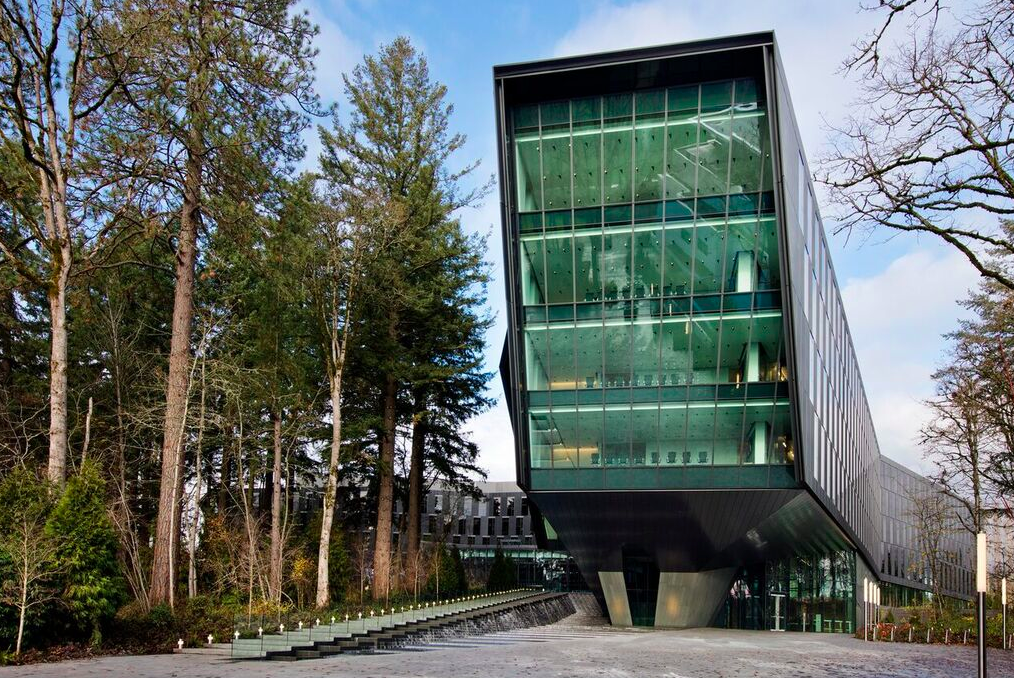
A fitness center opened in 2018, named after Coach Mike Krzyzewski (the building’s third floor features a basketball court paying homage to Coach K), gives the campus a fresh perspective. The 47,000-square-foot Coach K building features a stainless steel statue of Coach K in his “coaching position,” silver eyes above the reception desk that come to life when viewed through a phone, quotes on the walls, an ode to every one of his 1,000 Duke wins, a specialized scoreboard in the gym, a court designed to mimic the sole pattern of the Nike Cortez shoe, and even an elevator conductor lever with an inscription dedicated to Coach K’s father, William, who worked as an elevator conductor in Chicago.
Whether dedicating brand-new buildings or long-existing structures, Nike does more than simply name everything after people. It tries to fill them with personality. Every building adorned with the name of a famous athlete on the outside contains levels of that athlete’s history inside. Maybe it is the PGA Championship trophy in the Tiger Woods Convention Center, the revolving collection of glass-encased Air Jordans in the lobby of the Michael Jordan Building, or the signed cleats from every stop in Jerry Rice’s career. Each building is worthy of a stop.
To go deep into the memorabilia Nike contains, go well beyond the walls of Pre Hall and pick your favorite athlete, visit their building and take in their history. The Dan Fouts Building, for example, shows off the aesthetic touches that embrace the history of the athlete and their sport. Fouts, who played for the San Diego Chargers, can take in the suspended lightning-bolt “Surge” sculpture that lights the south lobby. The 254 dots around the perimeter of a steel floor seal summarizing Fouts’ achievements with the University of Oregon and San Diego represents the number of touchdowns in his professional career. The door handles are large 11s, his number with the Ducks, and the new café area—now featuring Pok Pok—includes the Air Coryell Café, named after Fouts’ first coach with the Chargers. Tables in the café include hand sketches of Coryell passing plays.
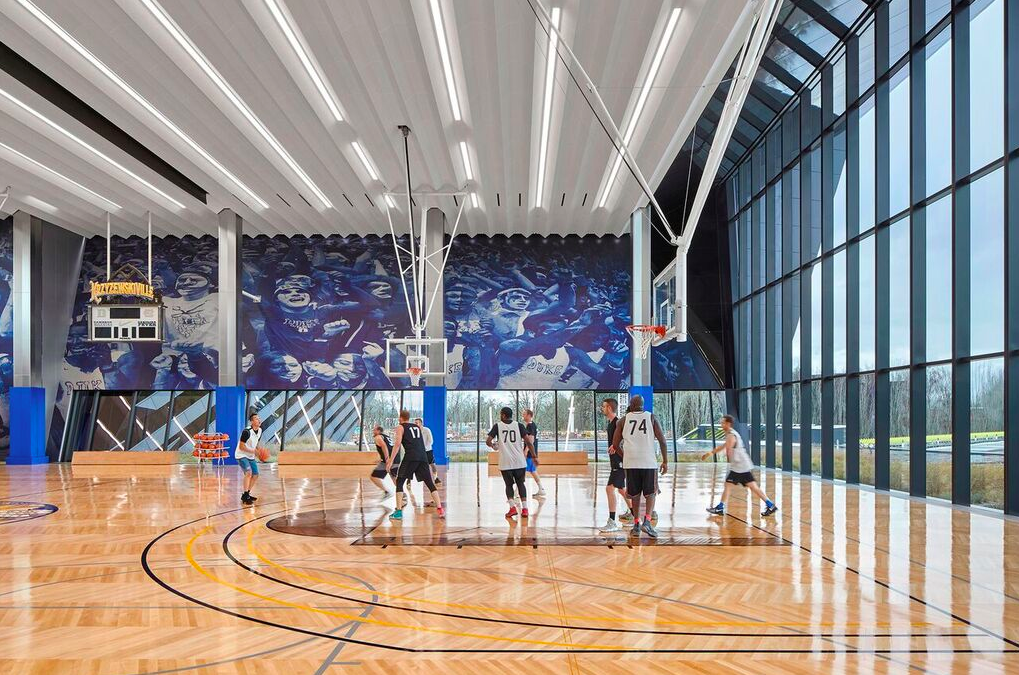
The grounds offers a few extras, too. Outside the expansive Tiger Woods Conference Center, overlooking Ronaldo Field’s two international-sized soccer pitches, a replica tee from Pebble Beach’s 18th hole seems logical enough. But look 317 yards away, next to the Sports Performance Center, and you’ll see the Pebble Beach green, too, protected by a bunker.
Statues pepper the property. There are the expected characters—Coach K, Michael Johnson, and Steve Prefontaine—but there’s also the more abstract like Nolan Ryan or the unexpected “Nike Girl,” a couple on a bench, or even two children playing on the shore of Lake Nike. And if statues aren’t your thing, get a cultural lesson with a visit to the on-site Nissho Iwai Gardens, honoring the Japanese trading company that helped Knight start Nike.
It being Nike Worldwide Headquarters, though, means some of the most impressive things on campus come in the form of sporting facilities. So it isn’t shocking the campus now boasts three fitness centers. The original, The Bo, named after Bo Jackson, has plenty in the way of weight rooms, cross-training, yoga, racquetball, and squash on three floors, as employees and athletes test product and work out. But the most fun comes on the upper floor, where a glass-encased basketball court welcomes the Oregon sunshine and NBA teams desiring a workout ahead of games against the Blazers. Nike employees sign up for lunchtime leagues, but have to give way when the likes of Kevin Durant stop in—as has happened—to shoot around.
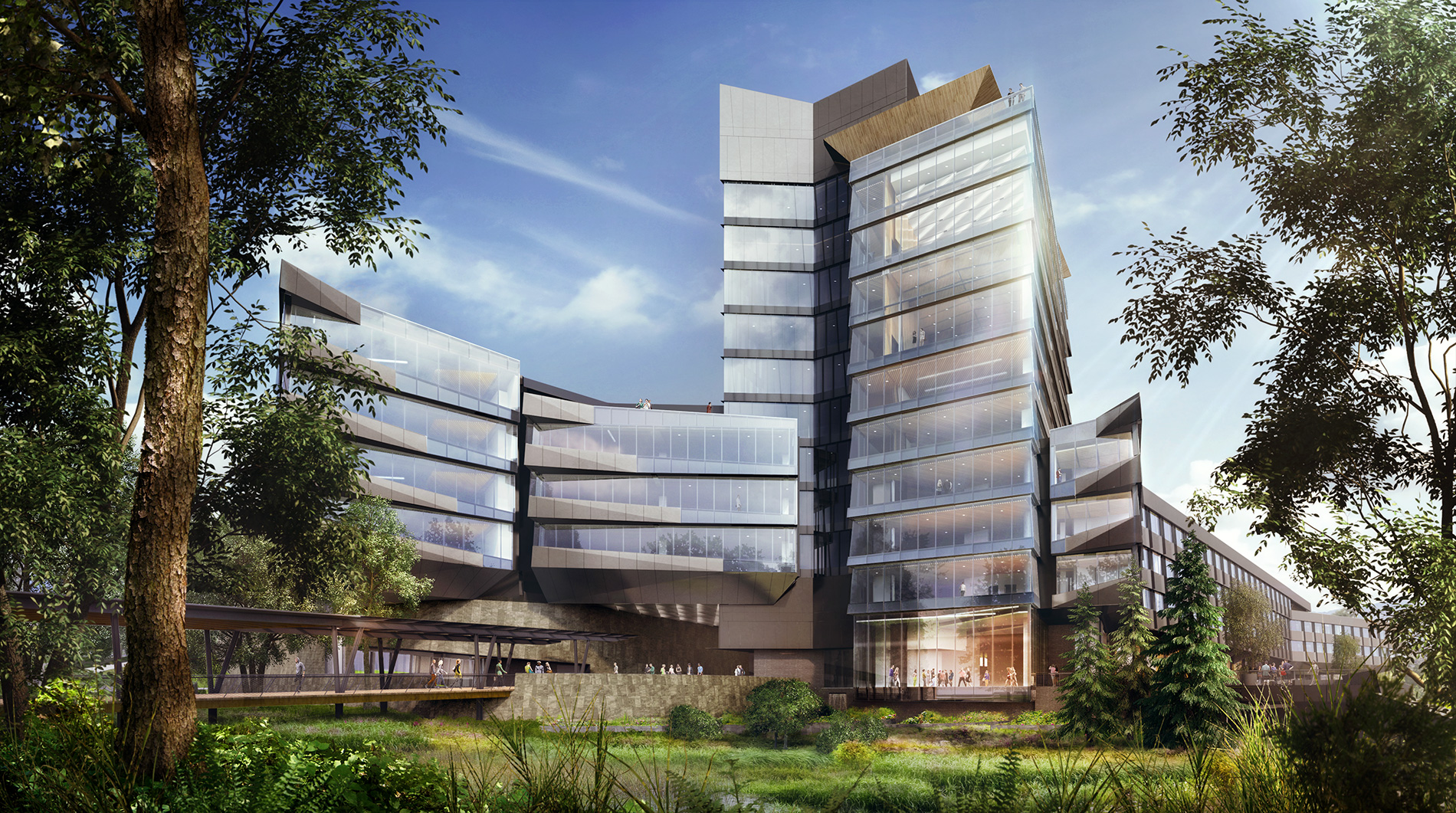
The Sports Performance Center, opened in 2001 at 75,000 square feet (it was once named after Lance Armstrong), includes a glass-encased, Olympic-size swimming pool. The two-story center’s 30-foot-high glass window walls also hold weight rooms, workout studios, a spin room, and a rock-climbing wall.
The Coach K facility trumps them both, though, especially with that specially designed basketball court on the third floor.
Exploring outside—whether you brought your umbrella or not—comes in many forms. A 1.3-mile trail loop inside campus includes four footbridges, and a 1.9-mile loop reaches outside campus. The best area for stretching those legs, though, come near that MAX stop, where the Michael Johnson track nestles into the landscape. A five-lane, 400-meter track made from 50,000 recycled athletic shoes lets the red of the surface play against the greens and browns of the environment.
With so many aspects to the university-like campus—often closed off at key points with security—it allows both employees and riff-raff like me to enjoy the odes to sports sprinkled about. The Nike Worldwide Headquarters serves as a workplace environment with the hustle of folks going about their jobs, but the campus is one with grand gestures, intriguing history, and a setting that gives it a unique character. For many lovers of sport and the gear tied to it, Nike is significant. A visit to the campus connects gear creation with experience. Or, at the very least, we can take in a bite of history at the Boston Deli.

